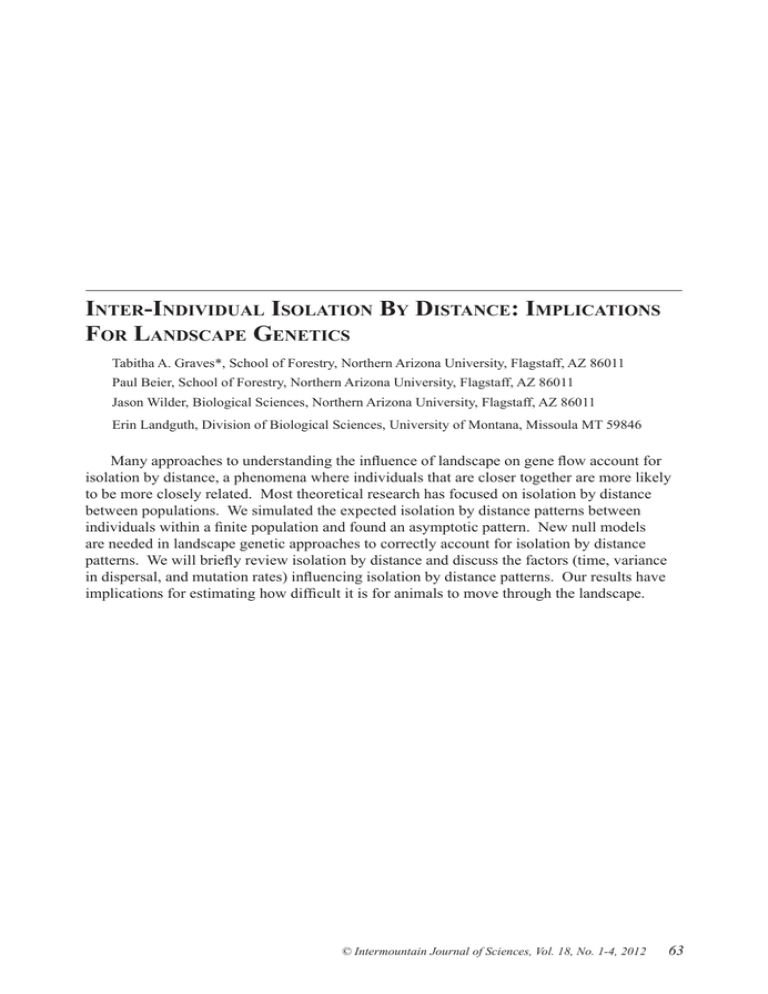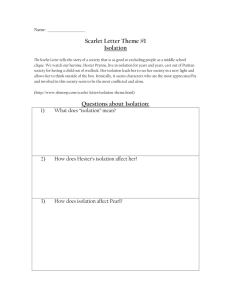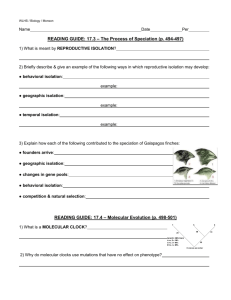I -I b d
advertisement

Inter-Individual Isolation By Distance: Implications For Landscape Genetics Tabitha A. Graves*, School of Forestry, Northern Arizona University, Flagstaff, AZ 86011 Paul Beier, School of Forestry, Northern Arizona University, Flagstaff, AZ 86011 Jason Wilder, Biological Sciences, Northern Arizona University, Flagstaff, AZ 86011 Erin Landguth, Division of Biological Sciences, University of Montana, Missoula MT 59846 Many approaches to understanding the influence of landscape on gene flow account for isolation by distance, a phenomena where individuals that are closer together are more likely to be more closely related. Most theoretical research has focused on isolation by distance between populations. We simulated the expected isolation by distance patterns between individuals within a finite population and found an asymptotic pattern. New null models are needed in landscape genetic approaches to correctly account for isolation by distance patterns. We will briefly review isolation by distance and discuss the factors (time, variance in dispersal, and mutation rates) influencing isolation by distance patterns. Our results have implications for estimating how difficult it is for animals to move through the landscape. © Intermountain Journal of Sciences, Vol. 18, No. 1-4, 2012 63




